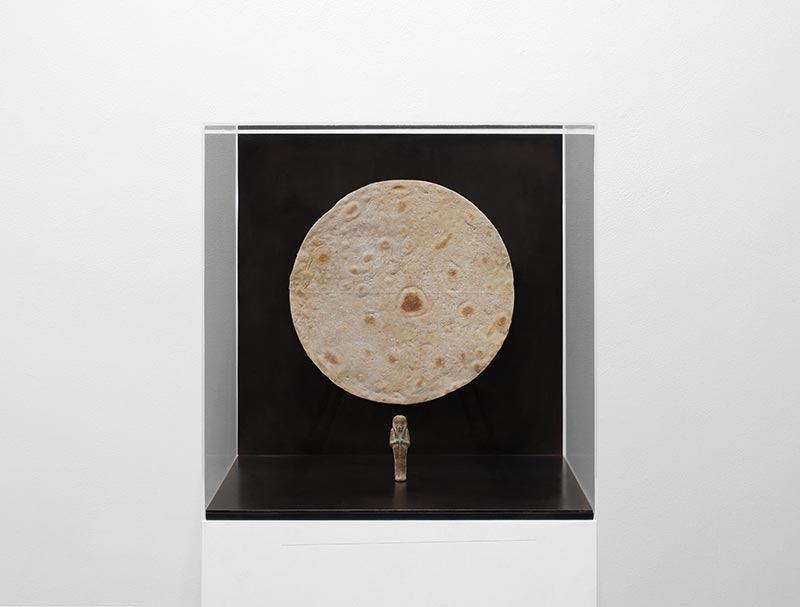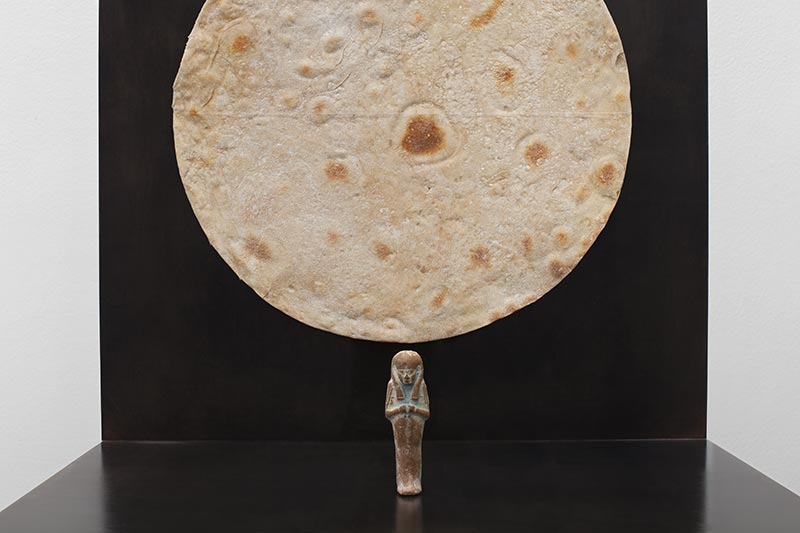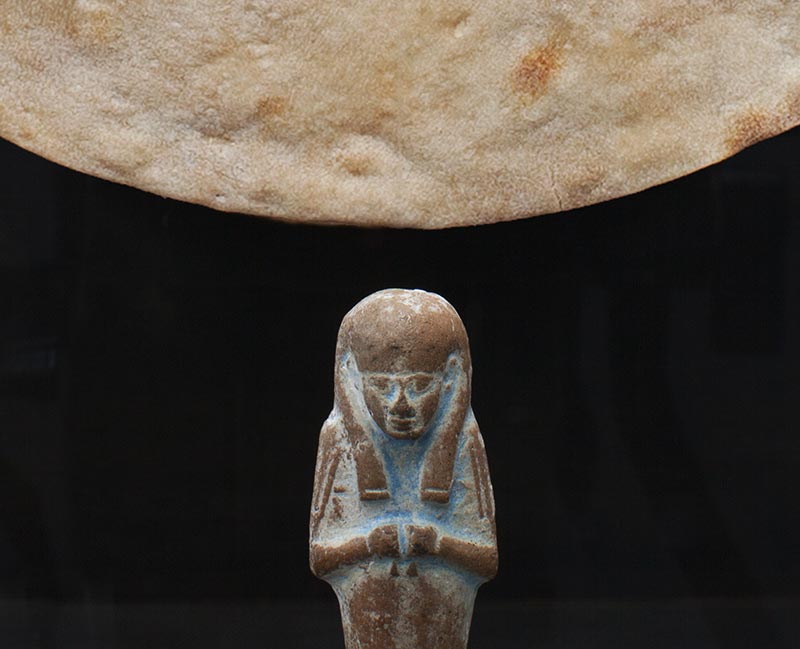Ancient questions
answered alive in me again
Mount Eerie, Ancient Questions
-
In ancient Egypt, shabti were effigies that were placed in tombs and meant to act as servants to the dead in the after-life; many of the services that they were to provide concerned food. The Egyptian religious traditions and the resulting funeral protocol are focused on the axiom of resurrection: shabti were supposed to metamorphose from statuettes into living beings.
A pair of them, cast from the same mould, was purchased by the artist. In order to enact the cycle of transformations, one shabti out of the two was reduced to a very fine powder, which was then mixed with the ingredients of a pita bread and cooked. The bread is edible: through a process of metamorphosis, the shabti has come back to life.
 Shabti (ancient Egypt, third intermediate period), pita bread (shabti powder, flour, yeast, water, salt, olive oil), steel, magnet, plexiglas
Shabti (ancient Egypt, third intermediate period), pita bread (shabti powder, flour, yeast, water, salt, olive oil), steel, magnet, plexiglas
40,8 x 30,8 x 41,3 cm
 see also Canopic jar
see also Canopic jar
En Égypte antique, les oushebti étaient des statuettes figurant un serviteur pour l’au-delà, placées près de leur propriétaire dans les tombeaux.Les services à rendre concernaient surtout la nourriture. La tradition religieuse égyptienne dont dépend le protocole funéraire est centrée sur l’axiome de la résurrection. Les oushebti sont ainsi censés passer de l’état de statuettes à celui de serviteurs bien vivants.
J'en ai acheté deux, provenant du même moule. Afin d’accomplir le cycle des transformations, j'ai réduit un oushebti en poudre, puis l’ai mêlé à une préparation de pain pita, et cuit. Le pain est ainsi en attente d’être mangé: par métamorphose, l’oushebti a retrouvé une place dans le vivant.

Statuette d’oushebti (Égypte antique, IIIè période intermédiaire), pain pita (oushebti réduit en poudre, farine, levure, eau, sel, huile d’olive), acier, plexiglas
40,8 x 30,8 x 41,3 cm

voir Vase canope








